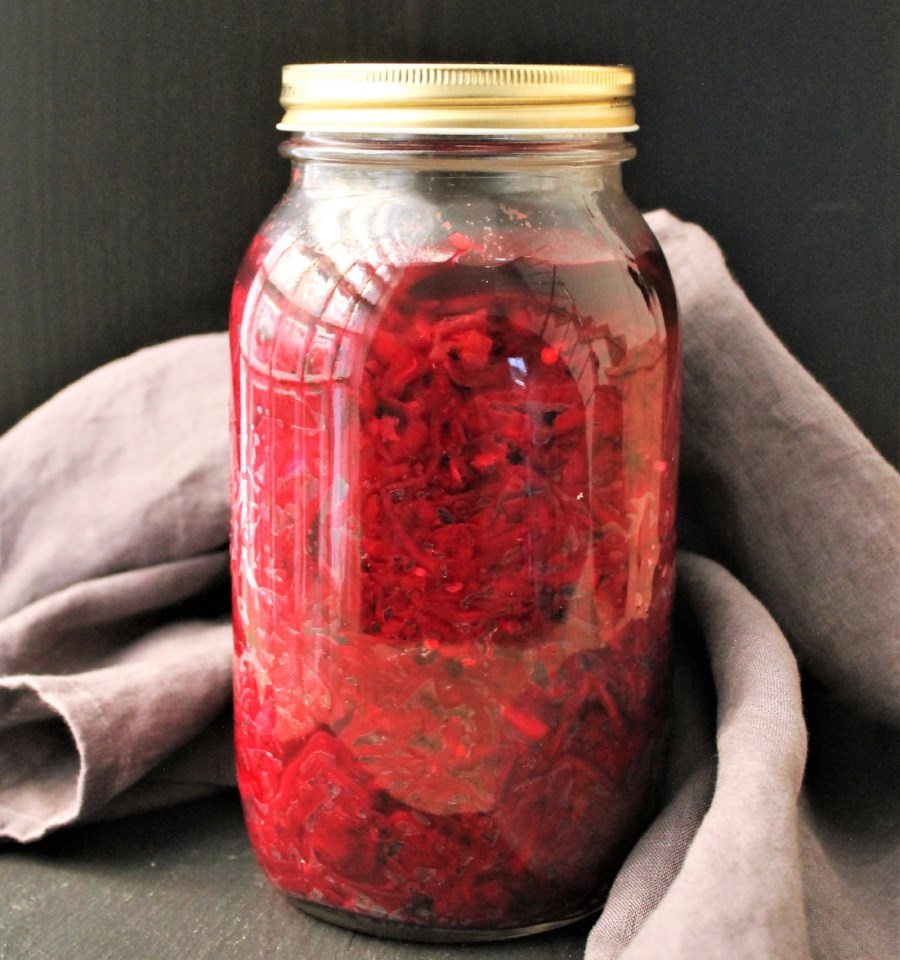Fermentation builds good bacteria that enhance the colonization of your belly with the kind of critters that keep you vital and glowing. There are about 100 trillion of these little guys in your belly, more than 10 times the number of cells anywhere else. This ecosystem depends on your diet choices to provide the best nutritional environment. The healthier these bacteria are, the more variety of strains you have, the better able you will be to extract nutrients from your food. This nutrition builds what you see on the outside and how you feel on the inside.
This time of year, the darker days and less time outside can lead to seasonal depression. A common treatment from your doctor might be a medication that increases the uptake of a hormone called serotonin (SSRI’s). Interesting to note is that 90 per cent of the body’s supply of serotonin is manufactured in the gut. Lower production of serotonin is also linked to Irritable Bowel Syndrome, cardiovascular disease and osteoporosis. So let’s get those babies swimming in a much healthier soup!
Common fermented foods are kimchi, sauerkraut, miso and yogurt (unsweetened). A few tablespoons of this probiotic-rich food can help with a myriad of health conditions such as: skin rashes, fatigue, headaches, bloating, weight gain, depression, allergies and more. Supplements from the health food store are readily available, but so is your kitchen!
Our recipe features beets and their greens. These are still available locally at the farmers’ markets. Feel free to get creative. The latest batch in my kitchen included grated turnip, carrot and cabbage.
Beet Sauerkraut
Use this crunchy and salty “salad” on a sandwich or as a side dish. It isn’t sweet like coleslaw or pickles, but the unique “sourness” becomes addictive once you accustom to it.
Wash and scrub three large red beets with their greens. Roughly chop greens and stems. Grate beets, with skins still on. Put vegetables in large stainless bowl. Plastic may stain.
Add 1 tsp sea salt (no additives) to bowl and begin to massage the beets until water is extracted. Taste the beets and add a little more salt to taste. I wear tight latex gloves (like painting ones) to keep hands from staining. Lemon juice works well to bleach stains, too. This takes about five minutes. If there isn’t enough liquid to cover beets completely, add a little filtered water (such as Brita water). Water with a lot of chlorine defeats the development of bacteria.
Place prepared beets into a glass jar (like a Mason jar). Press down super tight, using a knife around the edges to ensure all air bubbles are eliminated. Make sure the liquid covers all the veggies. You can use a Ziploc bag filled with dried beans to weigh down the beets, so the liquid covers them. You don’t want any air to get in at all.
Let the jar sit on your counter for 3 – 7 days, in a cooler section of your kitchen (not next to the stove). It will bubble and foam a bit as fermentation occurs. Scoop off any discoloured bits, refill with filtered water and a bit of salt to keep airtight. A little bit at the top may discolour but you will discard that when you store permanently. The main part of the jar will remain a good red colour, although it might lighten a bit.
After the fermentation period, screw on a jar lid and store in a cool place (under 50 F degrees) for up to three months. Once refrigerated, you don’t need to keep it covered with water anymore. Drain off excess.
For more information, www.cherylgordonyt.com.



